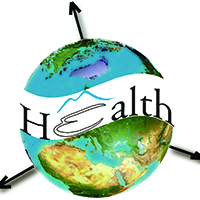Spatio-temporal analysis of tuberculosis incidence in North Aceh District, Indonesia 2019-2021

All claims expressed in this article are solely those of the authors and do not necessarily represent those of their affiliated organizations, or those of the publisher, the editors and the reviewers. Any product that may be evaluated in this article or claim that may be made by its manufacturer is not guaranteed or endorsed by the publisher.
Accepted: 30 October 2022
Authors
Tuberculosis (TB) infection continues to present as a leading cause of morbidity and mortality in North Aceh District, Aceh Province, Indonesia. Local TB spatial risk factors have been investigated but space-time clusters of TB in the district have not yet been the subject of study. To that end, research was undertaken to detect clusters of TB incidence during 2019-2021 in this district. First, the office of each of the 27 sub-districts wasgeocoded by collecting data of their geographical coordinates. Then, a retrospective space-time scan statistics analysis based on population data and annual TB incidence was performed using SaTScan TM v9.4.4. The Poisson model was used to identify the areas at high risk of TB and the clusters found were ranked by their likelihood ratio (LLR), with the significance level set at 0.05.There were 2,266 TB cases reported in North Aceh District and the annualized average incidence was 122.91 per 100,000 population. The SaTScan analysis identified that there were three most like clusters and ten secondary clusters, while Morans’Ishowed that there was spatial autocorrelation of TB in the district. The sub-district of GeureudongPase was consistently the location of most likely clusters. The indicators showed that there were significant differences between TB data before the COVID-19 pandemic and those found during the study period. These findings may assist health authorities to improve the TB preventive strategies and develop public health interventions, with special reference to the areas where the clusters were found.
How to Cite

This work is licensed under a Creative Commons Attribution-NonCommercial 4.0 International License.








